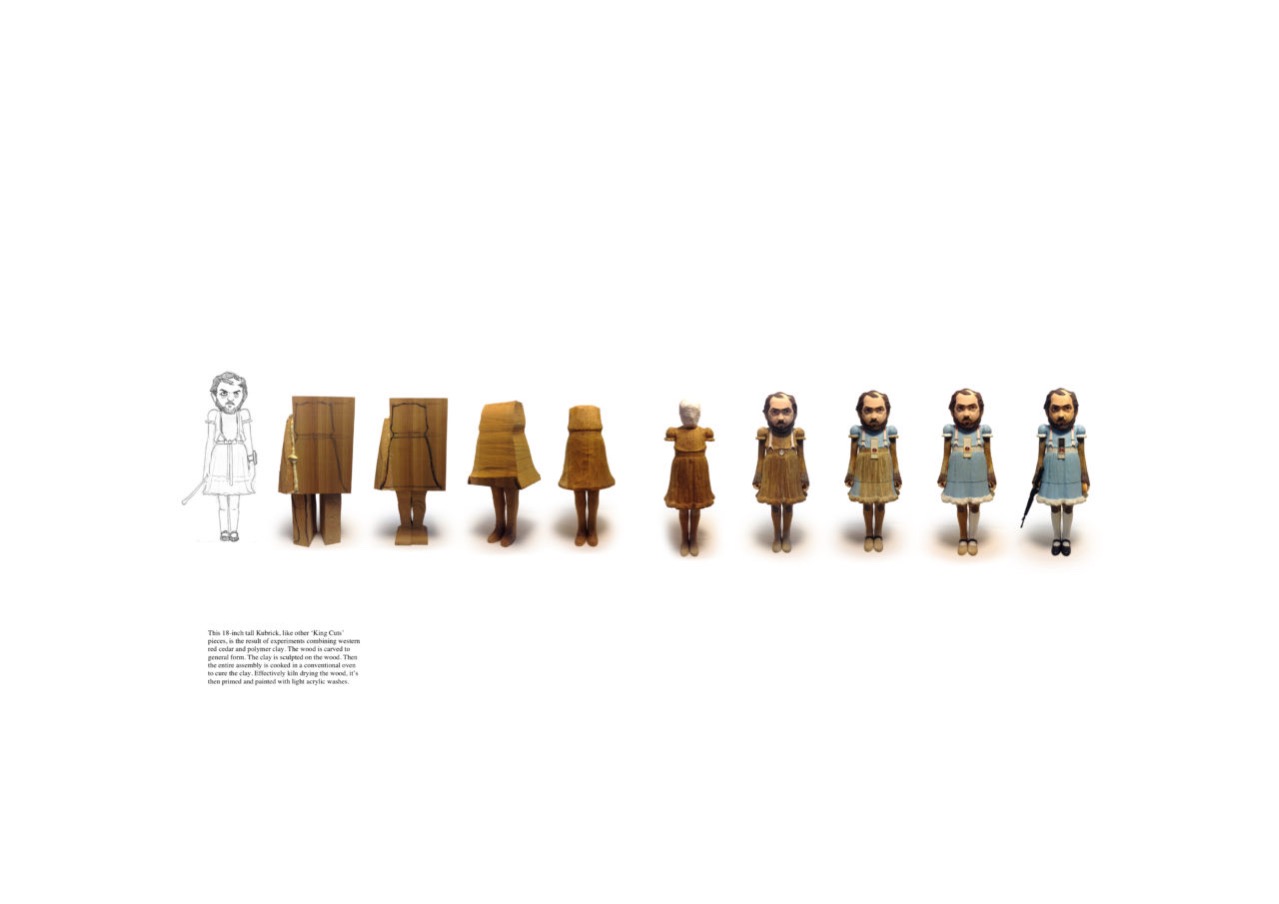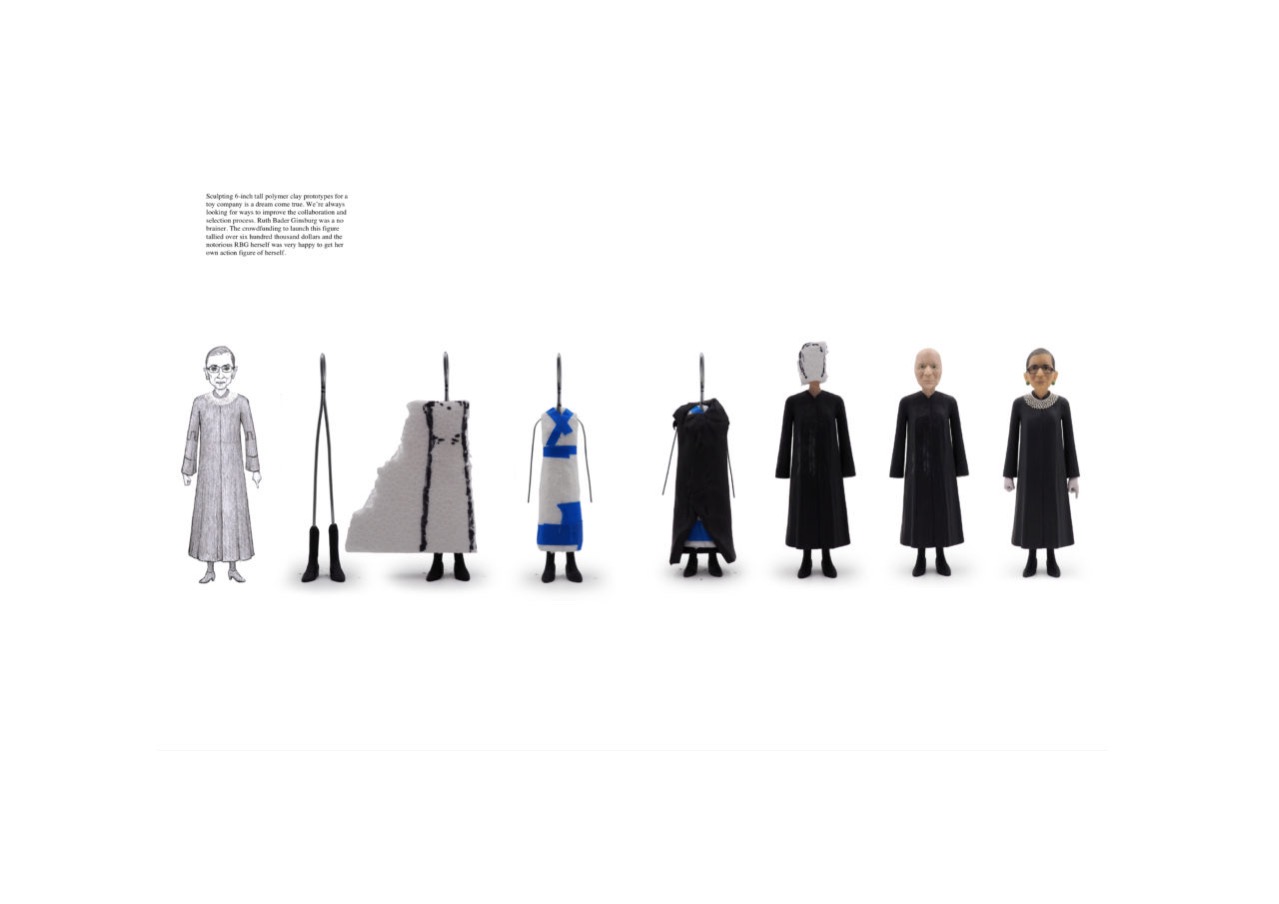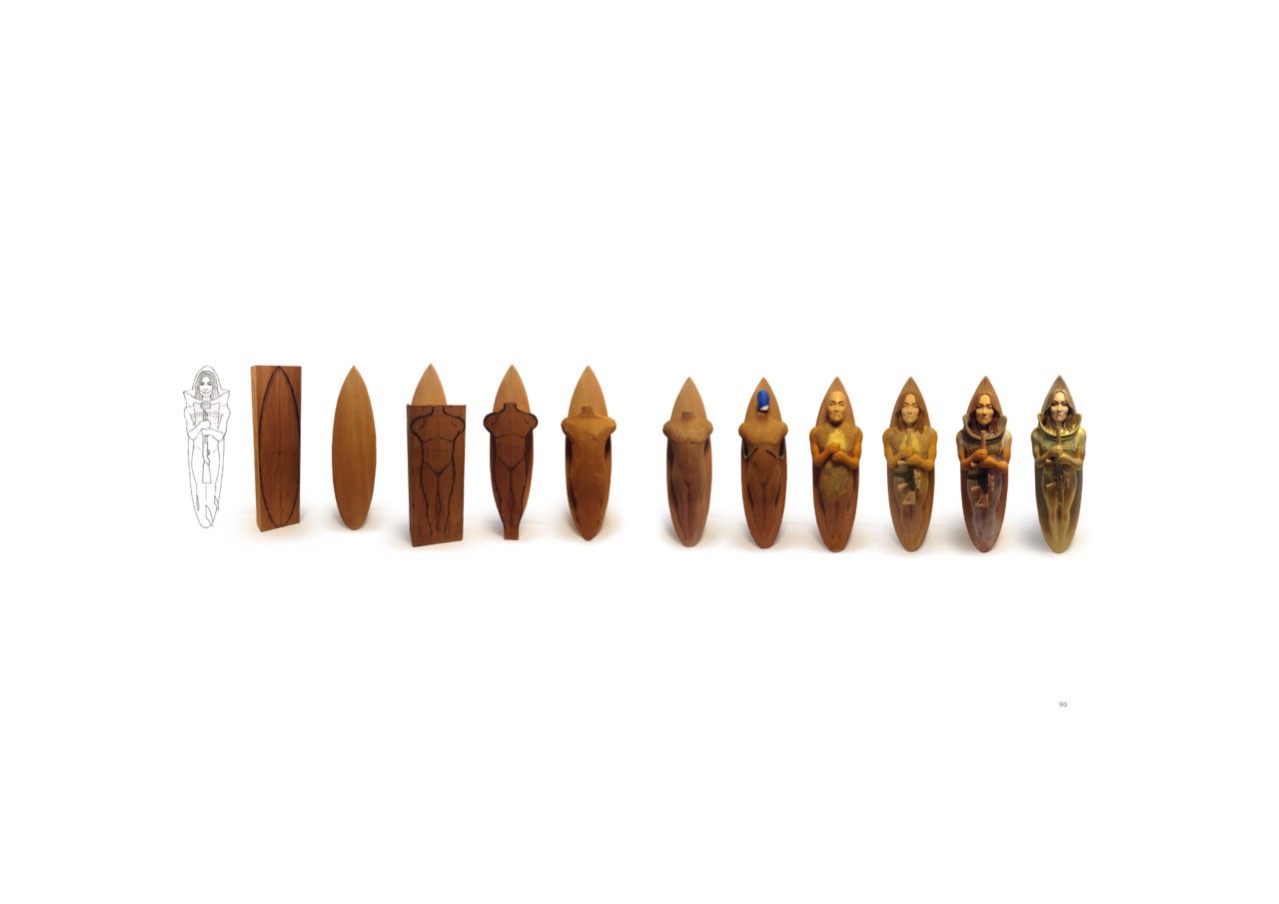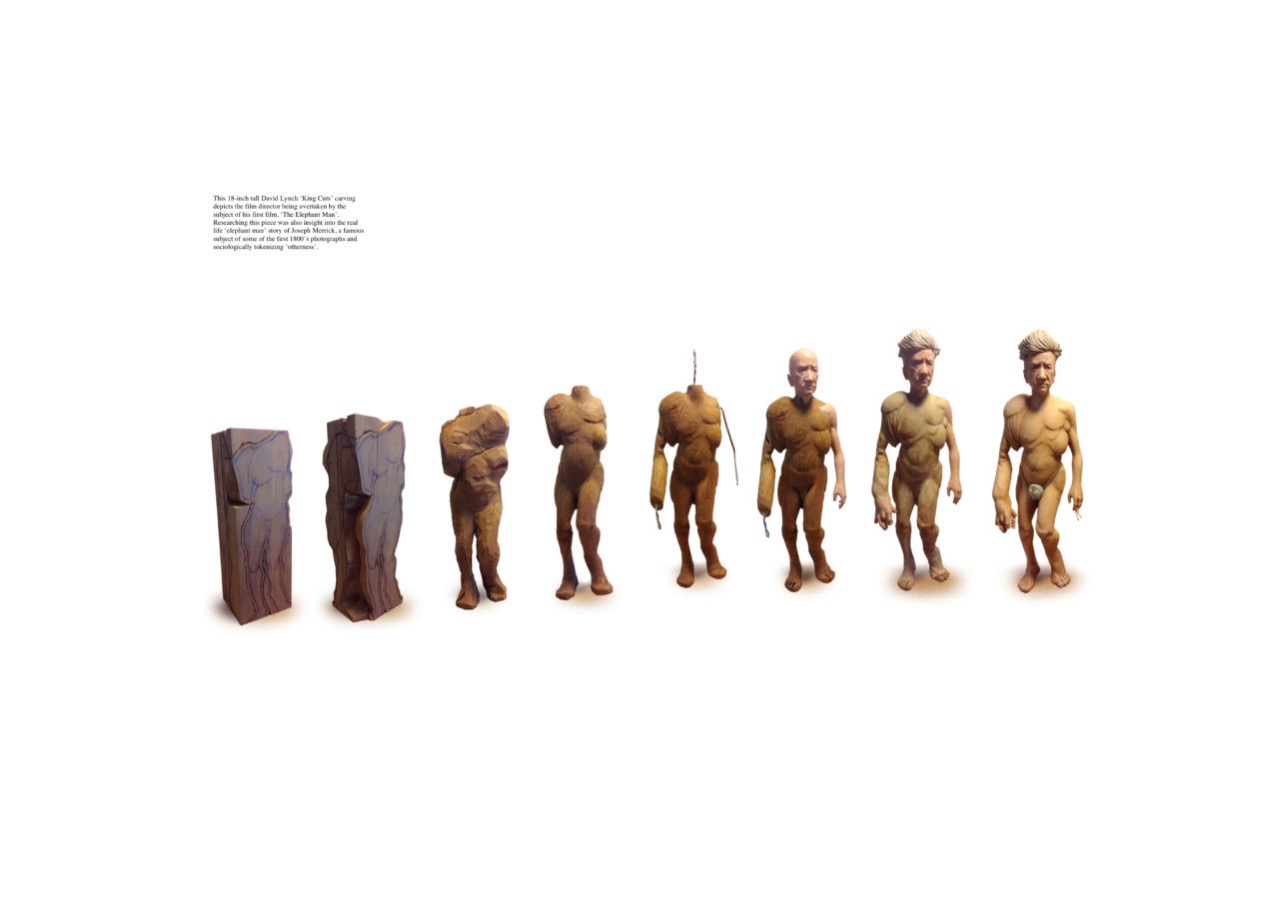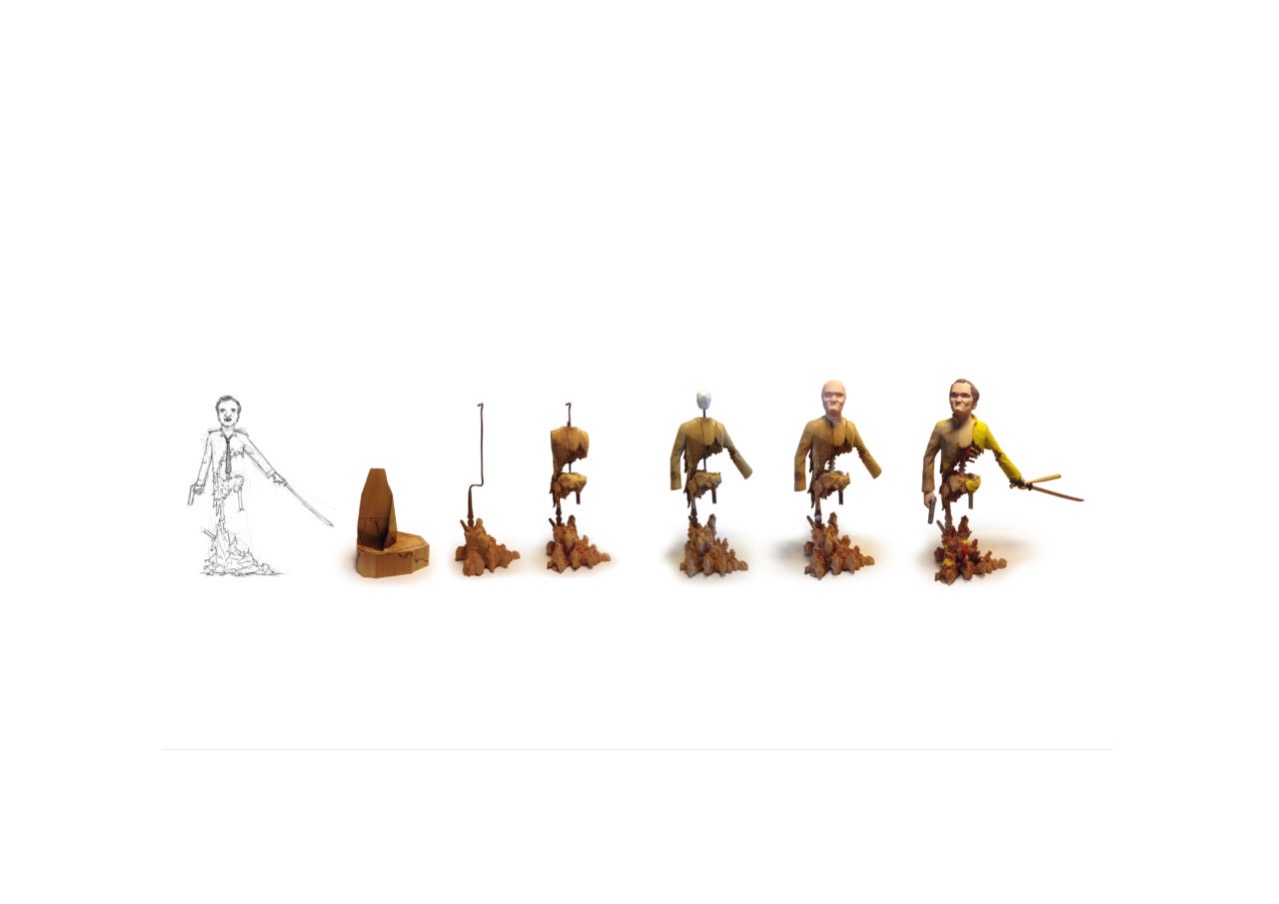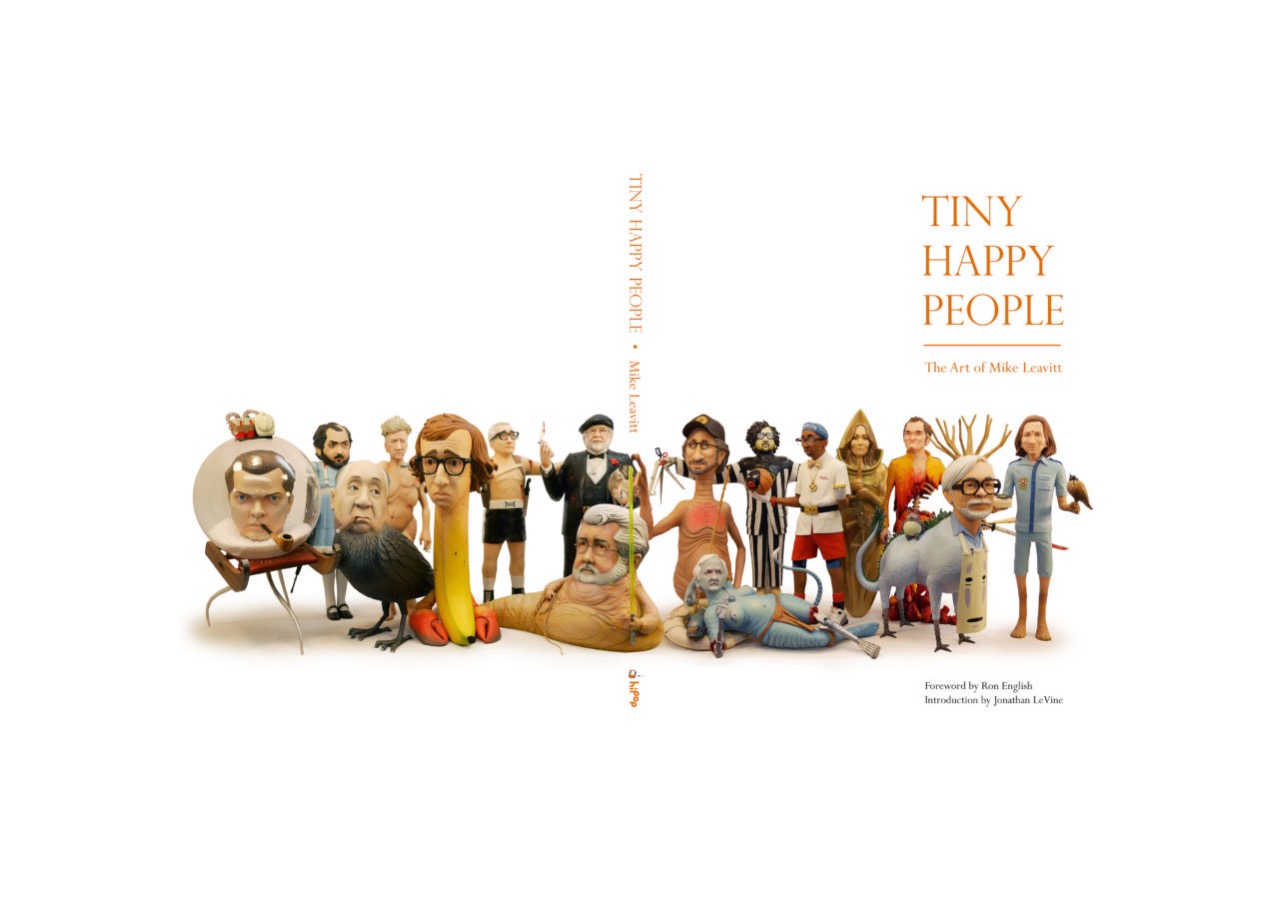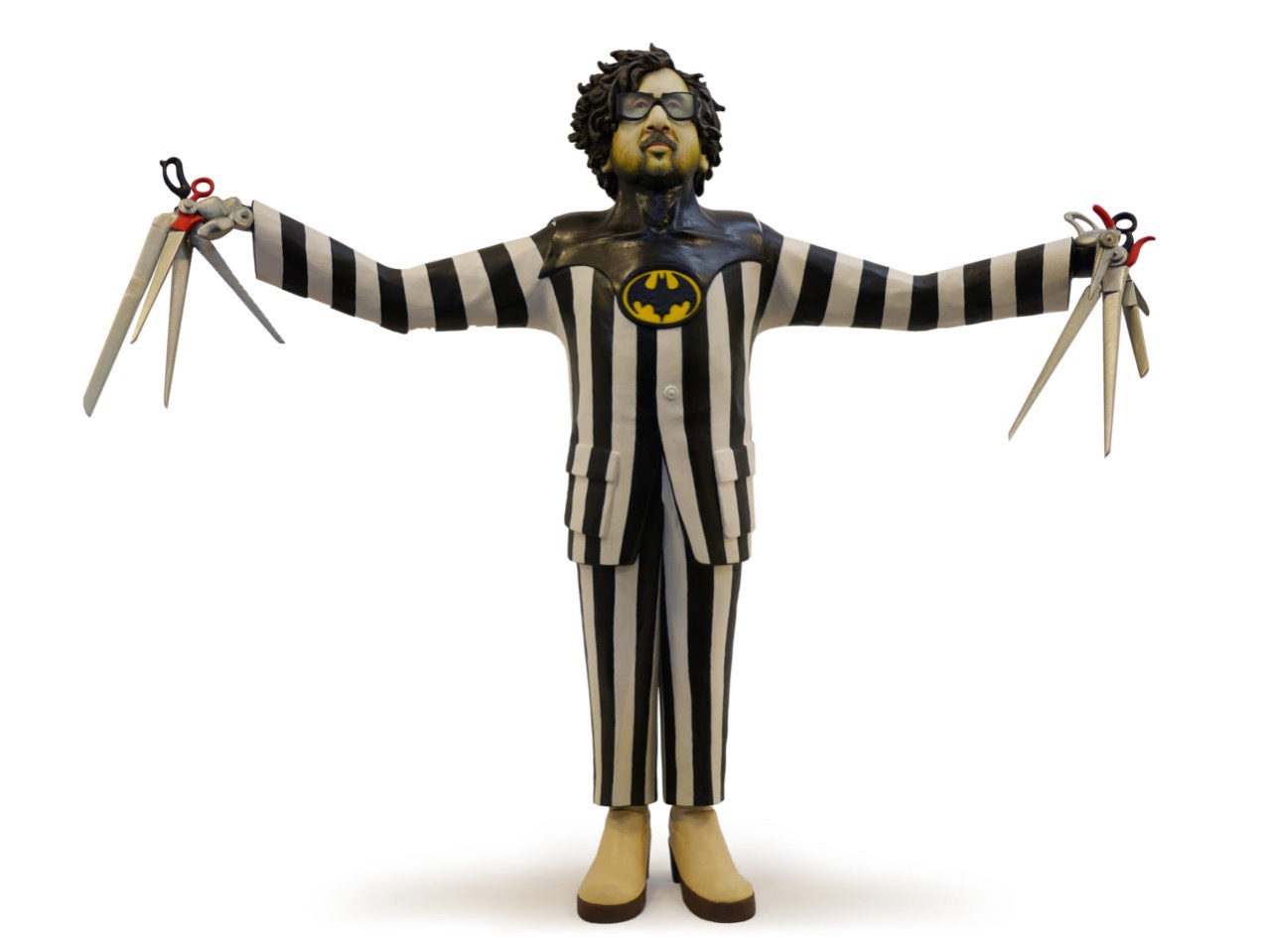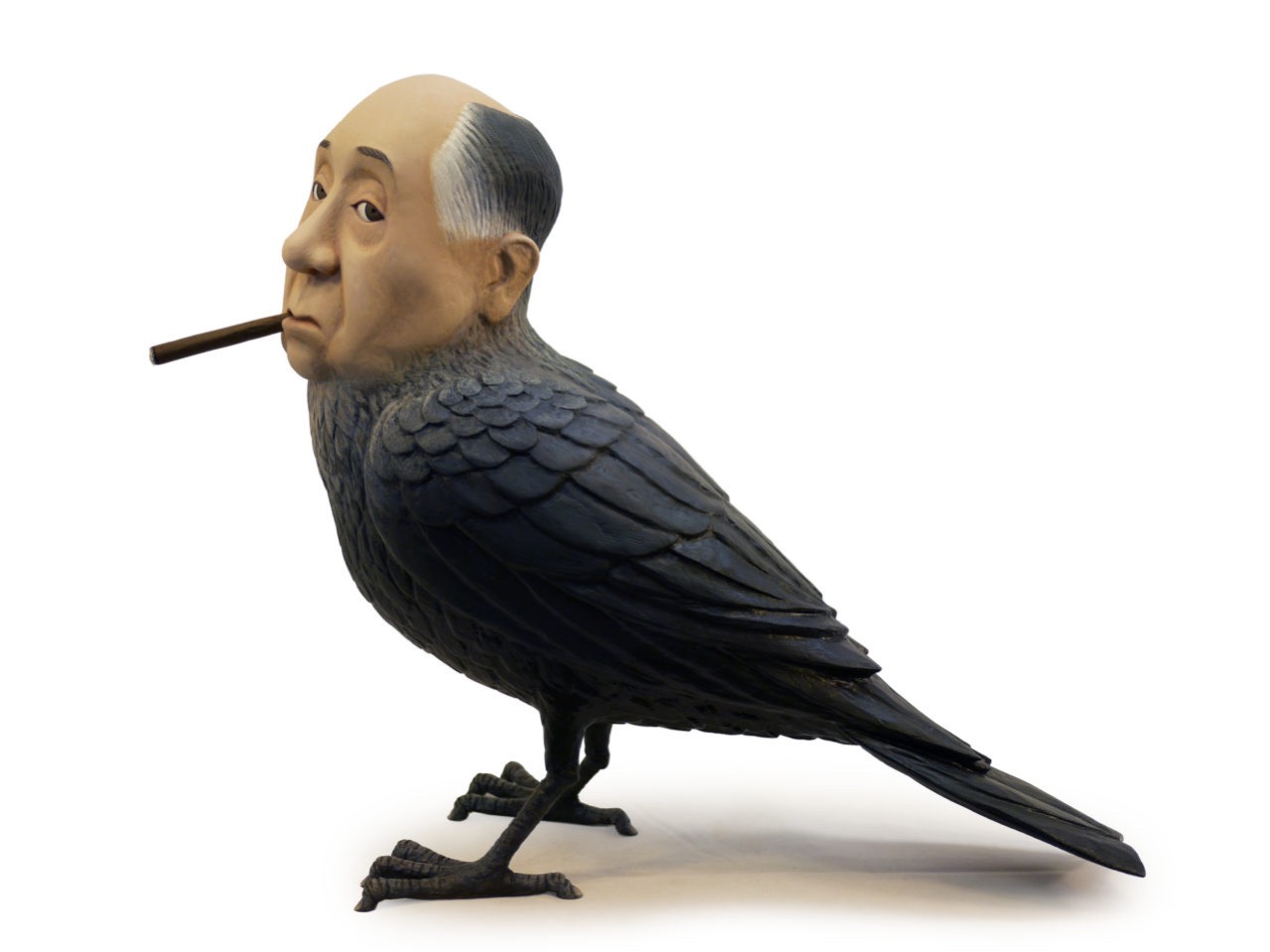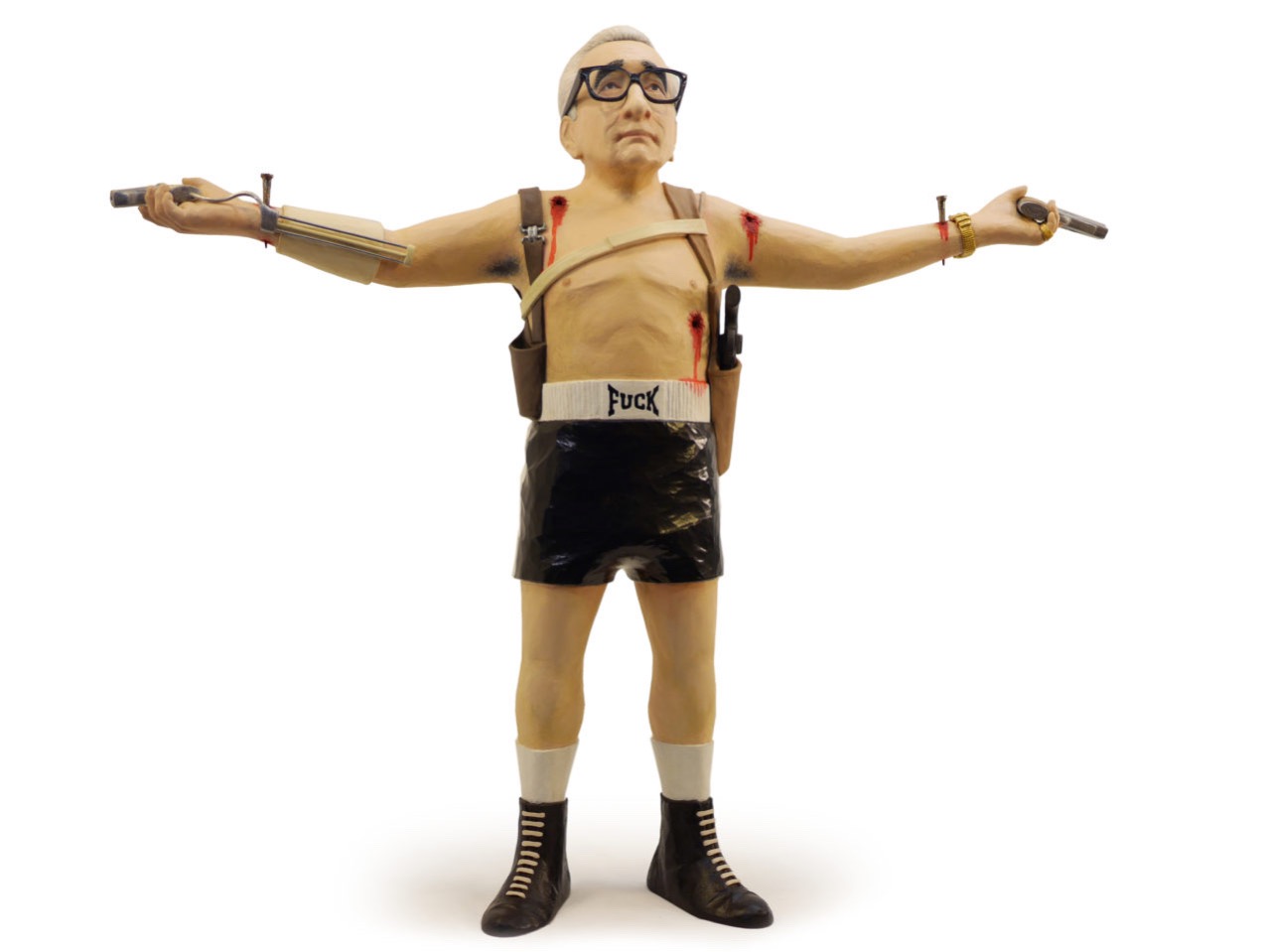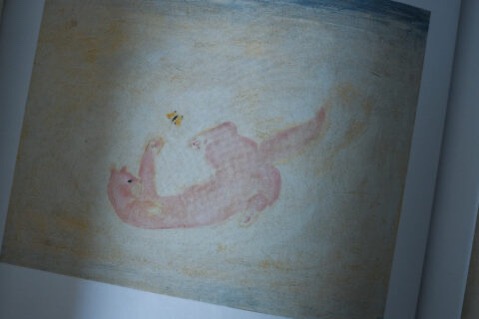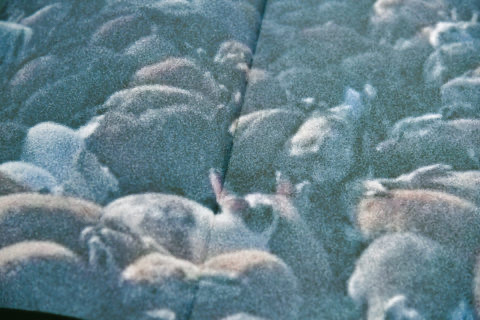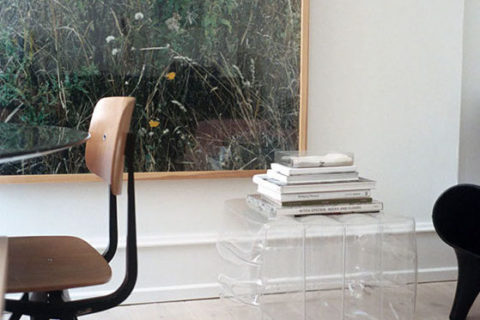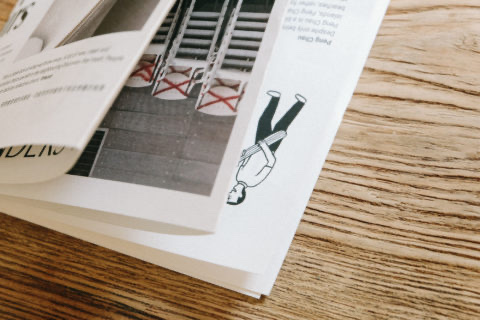意大利後現實主義時代導演帕索里尼,曾提出導演必須創造自己詞彙的理論,當導演和電影人物融為一體,不用依靠言語也能通過人物來敍述劇情和表現其世界觀。這種境界就是導演與他的電影人物融為一體,於是,宮崎峻是溫柔的龍貓也是沉默的無臉男;史提芬史匹堡是神秘的外星人也是現代的復活恐龍;添布頓是剪刀手愛德華,同時也是風度翩翩的骷髏紳士Jack。
這種想像驅使西雅圖藝術家Mike Leavitt創作出一套以電影為主題的人物模型系列《King Cuts》,以紅雪松木雕刻出16位來自世界各地的知名導演,更把他們與其經典的電影人物混合成趣怪可愛的人物模型,如史提芬史匹堡成為了《E.T.》的外星人、添布頓變成了《幻海奇緣》中的剪刀手愛德華和叼著雪茄的希治閣換上了《鳥》中雀鳥的身體。
「《King Cuts》是我目前最滿意我作品,每一件作品都混合了雕刻木材和以陶泥塑形的技術,先削走多餘的木頭,雕刻出大致上的形態,然後利用陶泥製作五官和頭髮等細節,就如拍電影時使用燈光、攝影角度和剪接來交代故事的細節一樣。這是兩種完全不同的技法,一種是用減法,另一種則是加法,因此要同時掌握又靈活運用並不容易。然而,我認為我做到了,這是我接近20年來,做得最好的人物模型。」Mike把複雜的製作過程都放在新書《Tiny Happy People》裡。「在製作這本書的過程中有一種製作人物模型沒有的感受,書本是平面的,只可一頁頁的被揭著;由第一頁揭至最後一頁是一種時間的移動;它合上後,隱藏在書架、露出細薄的書脊時又是另一種形態。我在構思新書時不斷思考每一頁的流動是怎樣的,什麼內容該在前面,什麼該在後面;想像是什麼原因驅使人打開一本書,又是什麼原因把它放在書架上。這都是有趣的經驗。」
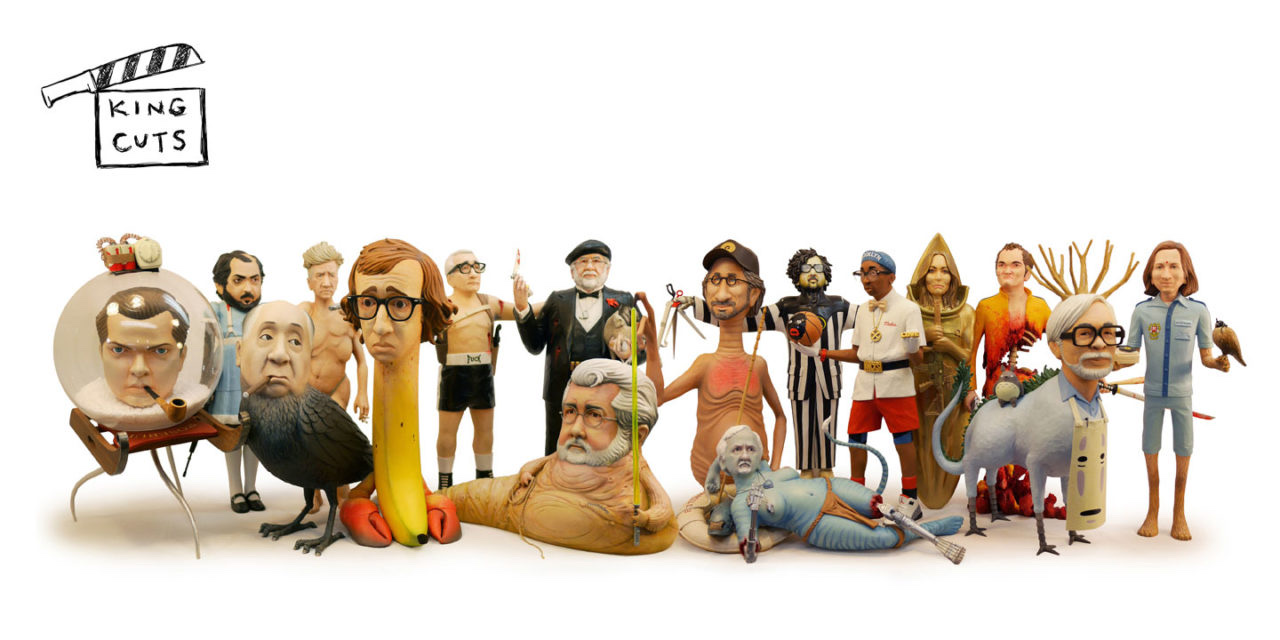
擅於把流行元素以幽默手法表現出來的Mike,人如其作品,時常在好心情的狀態,腦裡也有許多古靈精怪的想法。「《Tiny Happy People》的書名是來自R.E.M.的歌曲《Shiny Happy People》,樂隊一方面想認真表演,但唱起歌來卻十分趣怪。我覺得我的作品跟他們很相似,而Tiny Happy People不但指人物模型的尺寸和外形,同時也反映了八、九十年代的流行文化對我的影響。這些人物模型是介乎認真與玩味之間,就如我們什麼時候該去玩樂,什麼時候該表現得正經、有智慧?應怎樣去面對世界的危機和憂傷的情感?」去年製作新書時,Mike剛巧遇上父親和愛犬的離世,令他不斷地向自己提出這些疑問。不過只要他重新審視自己的作品,便能找到最好的答案。「我的作品予一種快樂的感覺,即使你在書名的『Happy』裡找到了一點悲傷,看到最後一頁時,還是會感到有一線希望的。」
Mike Leavitt首本書有超過200個人物模型的照片,有些作品更是20年前製作的。書中細緻地展示製作人物模型的步驟和手稿、靈感來源等,同時也收錄了他昔日的展覽和當時遇見的大人物;他希望讀者能從這些故事和趣聞中,脫去大眾眼中專業藝術家的光環,並從他們背後的故事裡重新體驗他們的作品。
The Italian neorealism director Pasolini once proposed that directors should invent their own kinds of language to create their own cinematic worlds. When the directors and their characters become one, characters in the film can communicate the plot and the worldview without the use of dialogues. This is how the directors immerse themselves in their films. Therefore Hayao Miyazaki can be the gentle Totoro and the silent No-Face; Steven Spielberg can be the mysterious E.T. and the cloned dinosaurs that roam the modern world; Tim Burton can be Edward Scissorhands and Jack, the elegant skeleton gentleman.
Imagining the relationship between directors and their characters, the Seattle artist Mike Leavitt created a set of sculpture called King Cuts. The series consists of 16 characters carved from red cedar wood. Leavitt blended the physical attributes of the renowned film directors with features reminiscent of their most-recognizable movie characters. He gave Steven Spielberg the body of an extraterrestrial from E.T., turned Tim Burton into Edward from Edward Scissorhands, whereas Hitchcock, still smoking his cigar, assumes the form of a bird.
“King Cuts is by far the series I am happiest with. Each of them is a child of wood carving and polymer clay sculpting techniques. I first carved the wood into approximately the desired shape, then I used the clay to mold the facial features, hair and other details. The process is similar to movie making where one needs to apply different techniques including lighting, camera angle and editing to narrate a story. I also applied two completely different techniques — subtraction and construction — to make my sculptures. It was not easy to master the two techniques in a skillful way. Nevertheless, I think I have made it. They are the best characters I’ve sculptured in the past 20 years,” says Leavitt in his new book Tiny Happy People explaining the making of the sculptures, “Making this book gave me a different experience when compared to making sculptures. Books are two-dimensional, flipping the pages is, in essence, a progression of time. A closed book sitting on the bookshelf has a different appearance when it is showing only the spine. When designing my new book, I spent a lot of time visualizing the flow of the pages, like what should come first and what should come next. I tried to apprehend what are the qualities that make a book attractive to readers, and why would people put a certain book on their shelves. These are all inspiring experiences.”
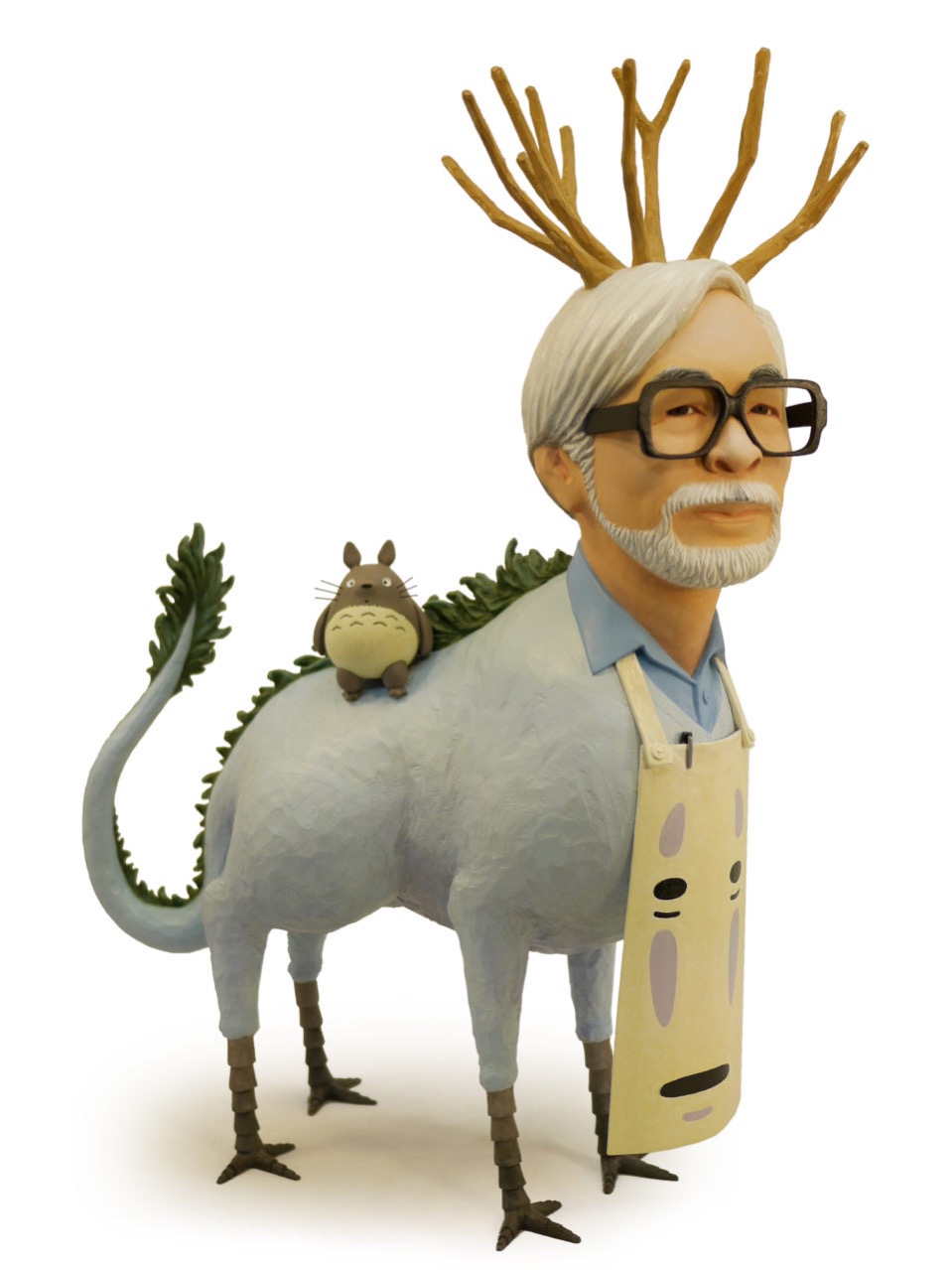
Leavitt specializes in portraying pop culture elements in a humorous way. Like the title of his book, Leavitt has a lot of eccentric ideas when he is in a good mood. “There is a 1991 song by R.E.M. titled ‘Shiny Happy People’. R.E.M. is a band that wants to be very serious but that particular song is so silly and goofy that they do not perform it live at their shows. I thought this juxtaposition was fitting to describe my work. Not only does Tiny Happy People literally describe the size and look of my figures. Much of my art also references cultural influences from the 1980’s, 1990’s and Generation-X that I grew up with. Tiny Happy People is also about the difference between art that is serious and not serious. When should we have fun, and when should we be more academic and intellectual? Especially in times of world crisis and personal sadness, how do we cope with these things? Should we make fun of them, or should we be solemn and grim? ” When working on his new book, Leavitt’s father and his dog unfortunately passed away. Therefore, he could not help asking himself all those questions. Luckily, he soon realized the best answer lies in his own works. “Then the weight of so much loss and mortality confronted every facet of my life and work. Still I want to be happy. Still I want to make things that make other people happy. This is another framework from which my book Tiny Happy People has been conceived. Even when it is not easy or obvious, how do we become happy? Is the pursuit of happiness the most important goal in life? These are very big and important questions I am raising here. I hope I addressed them to some degree in my writing for Tiny Happy People. If it sounds like there is sadness in a book with the word ‘happy’ in the title, I promise there is a silver lining at the end. ”
Mike Leavitt’s debut publication collects over 200 of the characters he sculptured, including the ones he made 20 years ago. It clearly depicts the steps of making the sculptures, as well as his drafts and inspiration. The book also talks about his previous exhibitions and the celebrities he met in the exhibitions. Through these anecdotes, he would like readers to revisit the works of these famous artists from a new perspective without being affected by their fame.
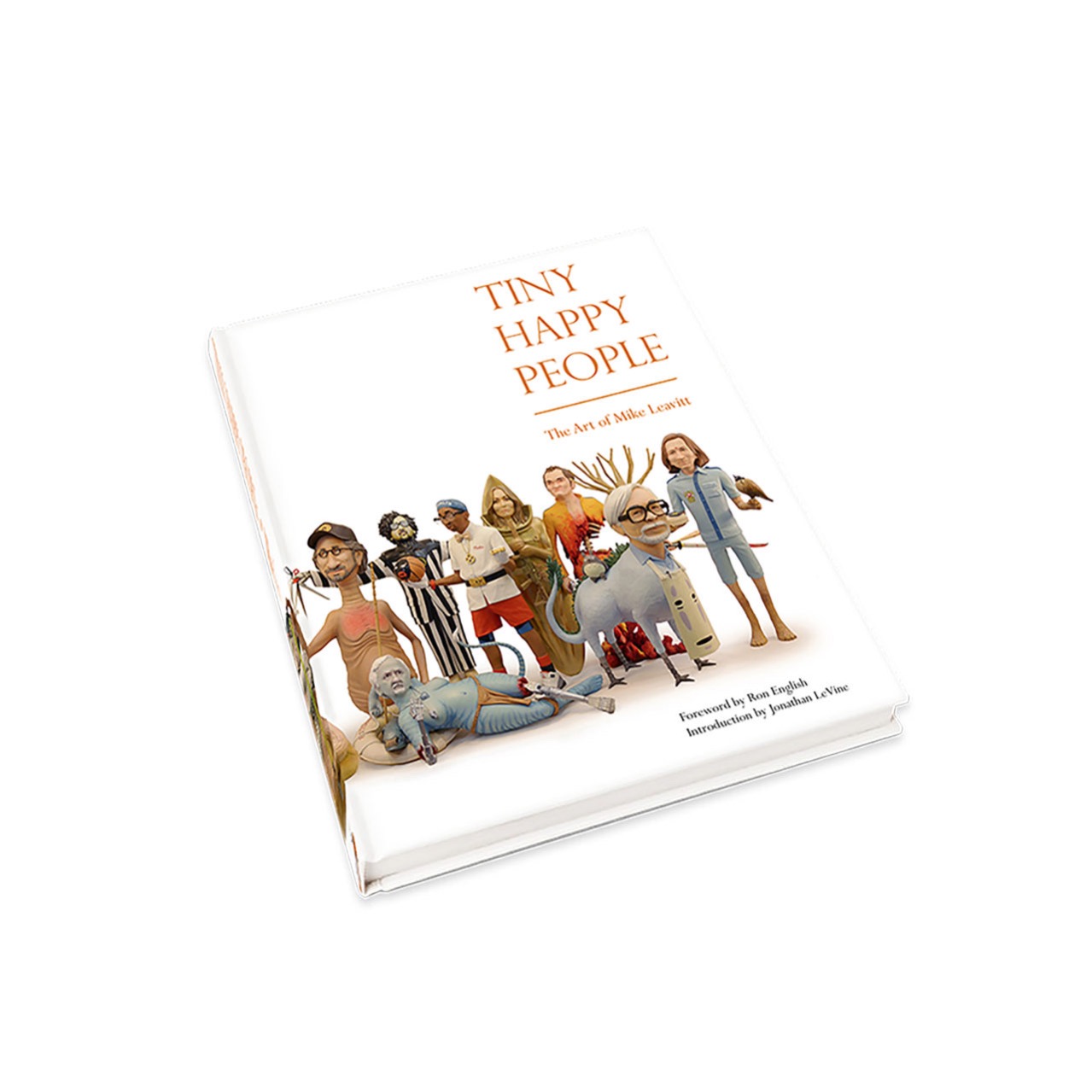
Tiny Happy People is available at Mike Leavitt’s official website
Wooden Sculptures are available at unun


